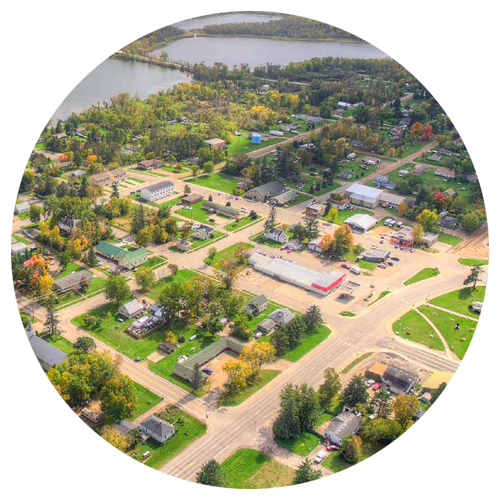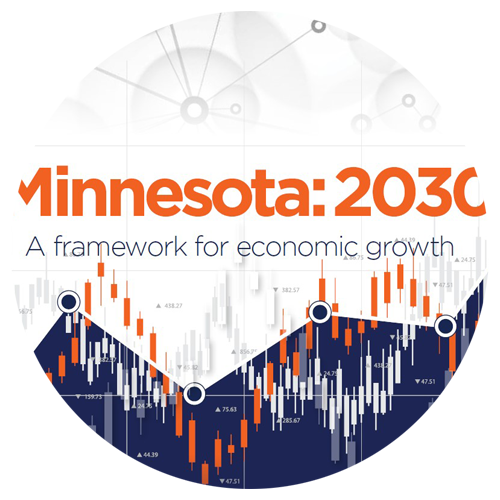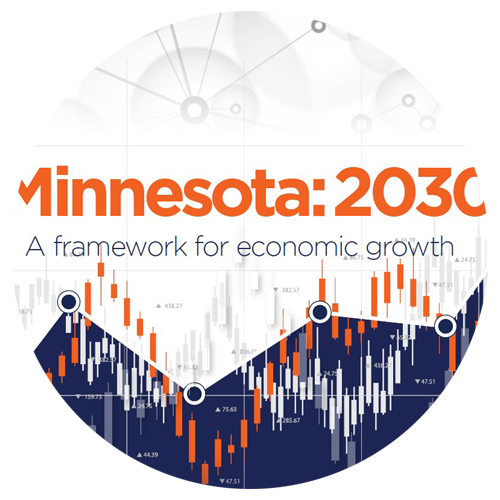Minnesota’s highly-developed economy
Minnesota: 2030
A framework for economic growth
Minnesota’s economy is highly developed, with a diverse base of industries, a hard working educated workforce, industry-leading companies, high innovation rates and above-average incomes. Data confirms that Minnesota is working from a strong base of core advantages that can be leveraged to advance the state’s economy for the next decade. Yet overemphasizing those strengths runs the risk of masking weaknesses and perpetuating the homespun narrative that Minnesota is above average at everything. That is not quite the case. Let’s break it down.
High per-capita income, GDP per capita and labor productivity
Minnesota’s per-capita income moved above the U.S. average in 1973. In 2019, Minnesota’s per-capita income was 105.3 percent of the U.S. average, while neighboring states in the plains region registered 95.6 percent and the Great Lakes states stood at just 93.3 percent.
Minnesota’s GDP per-capita was 15th highest nationally, at $60,066, above the 2019 U.S. average of $58,107. Productivity – GDP per worker rather than per capita – ranked 22nd nationally at $112,000. These measures confirm that Minnesota produces strong value with a modest population, contributing to the state’s overall quality of life.
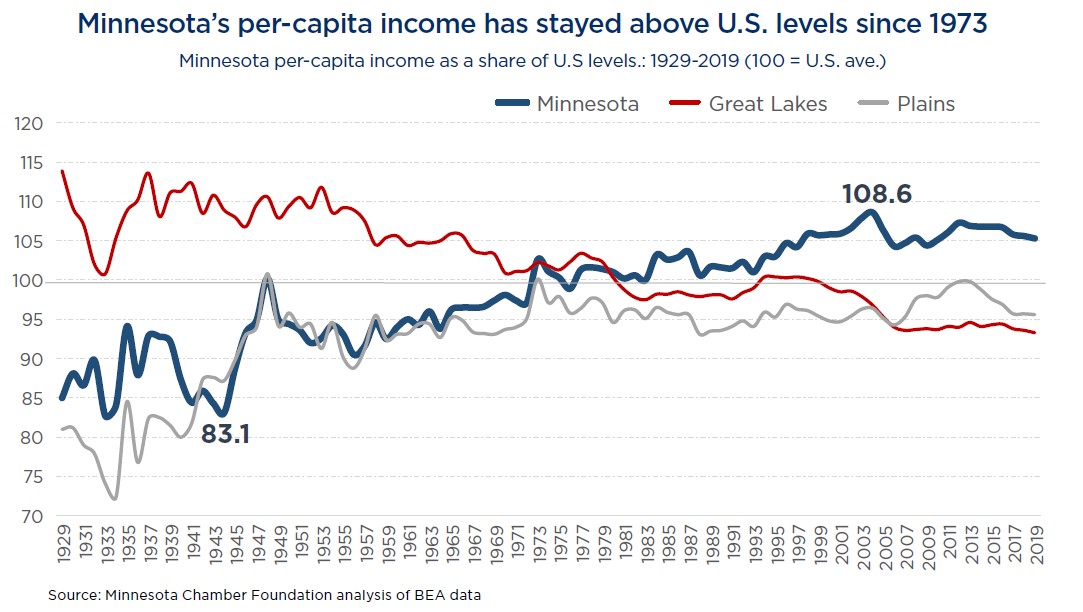
High labor force participation, low unemployment
Minnesota ranks in the top five states for labor force participation, contributing to higher income levels and measures of well-being. In 2019, Minnesota’s rate was 70.1 percent, 2nd in the nation. Thirty-four percent of Minnesota households are two-income households, compared to the national average of 28 percent. Minnesota has lower unemployment rates as a result. Pre-pandemic, unemployment was just 3.1 percent in Minnesota, below the U.S. rate of 3.5 percent. Even in the steep downturn throughout spring and summer 2020, unemployment rose less than U.S. unemployment, and by February 2021, Minnesota again stood at 4.3 percent, well below the U.S. rate of 6.2 percent. Our labor force participation did drop, however, to 67.5 percent at year-end, our lowest level since 1978.
Innovation and patent activity
Minnesota is notable for its innovation and rate of patent development. In 2018, Minnesota received the 6th most patents per capita. Medical technology drives considerable patent activity, but Minnesota also ranks in the top 10 for patent approvals in 17 different industries. A significant share of patents come from the Twin Cities metro area, but there is also substantial patent activity in Greater Minnesota, with Rochester being a particular innovation hub.
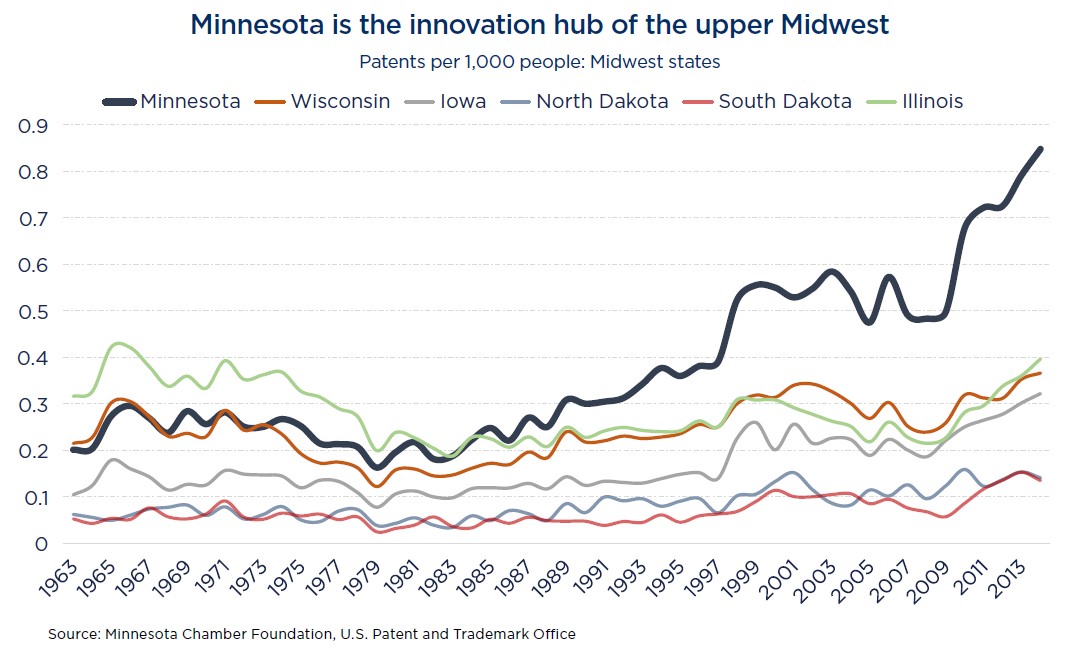
Economic Diversity
IHS Markit ranks Minnesota the 5th most structurally diverse state economy (measured by 2018 share of employment across industries). Economists posit that a diverse economy may help moderate swings in business cycles and buffer against industry downturns, and that’s arguably been true for Minnesota. Yet structural diversity by itself does not guarantee strong economic performance. Minnesota should aim to maintain its diverse economy, while strengthening industries where the state has competitive advantages.
Fortune 500 headquarters and industry-leading firms
Minnesota has an advantageous hub of large national and global corporate headquarters and industry-leading firms. The state has the highest concentration of management of companies (i.e. headquarters) jobs in the nation and is home to 16 Fortune 500 and 24 Fortune 1000 companies, as well as leading privately-held entities such as Cargill and Mayo Clinic. Minnesota’s high per-capita income and innovation rates are linked to a degree to this historical anomaly of large companies in diverse industries, from health care, food and agriculture to retail, financial services and manufacturing.
Characteristics of Minnesota’s highly-developed economy
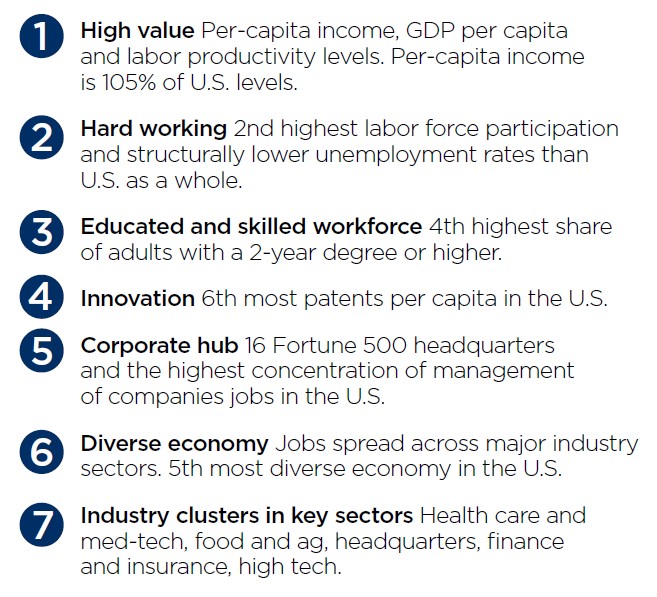
Industry clusters in key sectors
The combination of economic diversity and leadership in advanced sectors is a strength. Minnesota has concentrations of employment in health care and medical technology, food and agriculture, electronic control manufacturing, financial services, wood products and a variety of manufacturing industries. The state’s leadership in global medical innovation is notable, but Minnesota also possesses leading institutions and high concentrations of employment in a range of medical subsectors, from health care services and medical device manufacturing to insurance and health care data analytics, with growth in emerging digital health and biotechnology sectors as well.
Minnesota’s clusters have regional characteristics, with some spread broadly across the state and others concentrated only in certain regions. Food, health care and manufacturing span the state, while individual regions also possess characteristics and specialties that make their economic landscape distinct.
Education levels and concentrations of high-skilled workers
Minnesota has an educated and skilled workforce. The state ranks 4th in the share of adults 25 and over with a 2-year degree or higher and ranks 5th in adults with a bachelor’s degree or higher. Minnesota has concentrations of talent in key areas of future need, such as IT, STEM, business services and high tech. Talent advantages are a key driver of Minnesota’s overall economic competitiveness.
